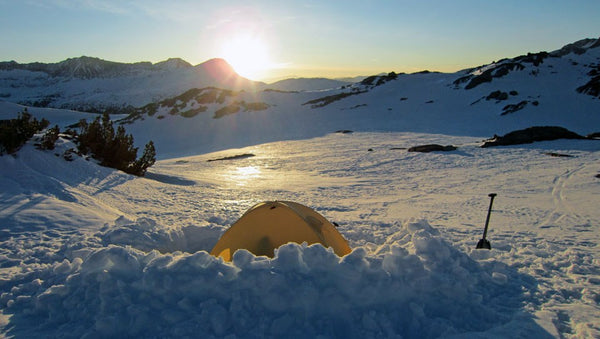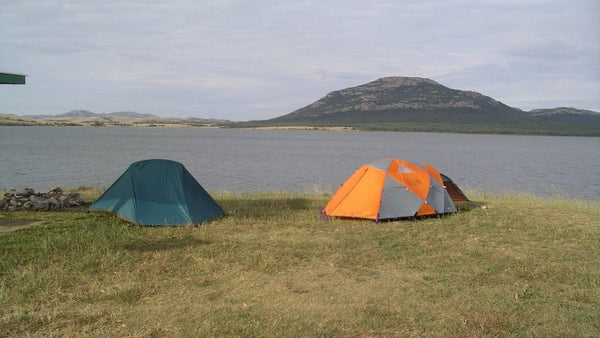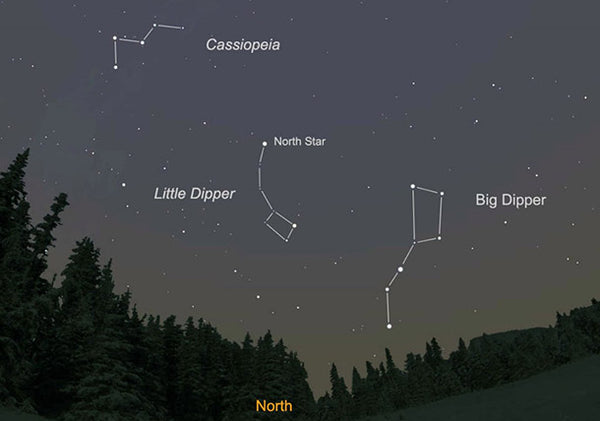Weather
It’s one of your very first considerations while planning an outdoor adventure. It can be the difference between a smooth and successful trip, an early bailout, or a full-on shelter-in-place scenario. Usually, it’s the singular deciding factor between type one and type two fun (“hey, this is fun!” V.S. “hey, we made it through the storm!”). But what is weather, really? No, it isn’t just Mother Nature’s way of keeping us on our toes. Or at least, that’s not all it is – weather is a natural phenomenon driven by some very simple, surprisingly un-mysterious forces, which any curious scout can understand and any meteorology-minded parent can explain. Understanding the basic workings of the weather is a great first step toward building confidence and knowledge about the natural world in general. So read on to demystify the mist, rain, wind, and thunder!
The Fundamental Forces of Weather
Sun – The sun is the primary force that creates all of the weather we experience – without it, there would be no weather on the planet at all. Though the sun is almost 93 million miles away, the weather it creates happens in the troposphere, the level of the atmosphere closest to the earth. It occurs in the first place because the sun heats the earth unevenly; striking some places more directly than others and heating up surfaces asymmetrically.
Temperature – This uneven distribution of sunlight is significant because it leads to differences in temperature throughout the planet. The places which receive the most direct sunlight have the highest temperatures and vice versa. Different surfaces of the planet also interact with sunlight (and therefore temperature) differently – bodies of water, for example, heat up and cool down more quickly than land masses do.
Air Pressure – Though it might not seem like it, air itself does have weight. Air pressure is a measure of the weight of the air at a given point on the earth’s surface or in the atmosphere. Areas of higher elevation experience lower air pressure, because they have less air (and therefore less weight) pressing down on them from above.
Humidity – Humidity is a measure of the degree of moisture in the air. The more water vapor present in the air, the higher the humidity. Warmer air is capable of retaining a larger amount of water vapor (maintaining a higher humidity) than colder air.
Fronts – A front is a boundary line between two air masses of differing temperature, pressure, and/or humidity. The two main types of front which affect the weather are the cold front (the boundary of a cold mass of air moving into an area) and the warm front (the boundary of a warm mass of air moving into an area). Generally, when a cold front moves in; colder, denser, less humid air pushes warmer air upward. And generally when a warm front moves in; warmer, less-dense, more humid air is pressed down lower to the ground.
Causes of Different Types of Weather
Wind-Wind occurs when two areas of differing air pressure meet – air always moves from areas of higher pressure to areas of lower pressure, which causes the phenomenon of wind blowing.
Clear Skies – When the sky is clear, blue, and cloudless, it usually means that high-pressure air is sinking down and warming up, preventing clouds from forming as it absorbs water vapor and becomes capable of accommodating higher levels of humidity. Typically this happens after a cold front passes through.
Clouds – Warm and humid air rises (either condensing on a warm front or being pushed up by a cold front), and when it reaches higher regions of the atmosphere it cools again. Cooler air can’t absorb as much humidity, so the water vapor lost by the cooling air condenses into clouds as it attaches itself to tiny particles of dust suspended in the air.
Precipitation – As more and more water vapor clings to the dust in the atmosphere, the water droplets they form become heavier and heavier. Once they become heavy enough, these droplets fall to the ground – if the air below is warm, the droplets will fall as rain; if it’s cold, then they’ll fall as snow. When snowflakes melt and then refreeze, sleet forms.
Fog – Fog occurs whenever humid air near the ground cools fast enough that it can no longer contain all of its water vapor. This could be the result of a cold rain (which decreases temperature and increases humidity), warm air moving in over a cold surface (cooling and releasing moisture where the two meet), or a number of other factors.
Thunder/Lightning – Thunderstorms typically occur when a cold front forces warm air to rise up into the atmosphere rapidly. As water condenses in the cooler air, it releases heat and energy – this massive energy release caused by rapid condensation can cause powerful thunderstorms.
Of course, this is only a basic rundown of the mechanics of weather – like any science, meteorology gets much more complicated (and interesting!) the more you learn and study.
If you can explain any other common weather patterns or atmospheric effects, feel free to do so in the comments!
Leave a comment
Comments will be approved before showing up.
Also in News & Skills




Richard White II
Author